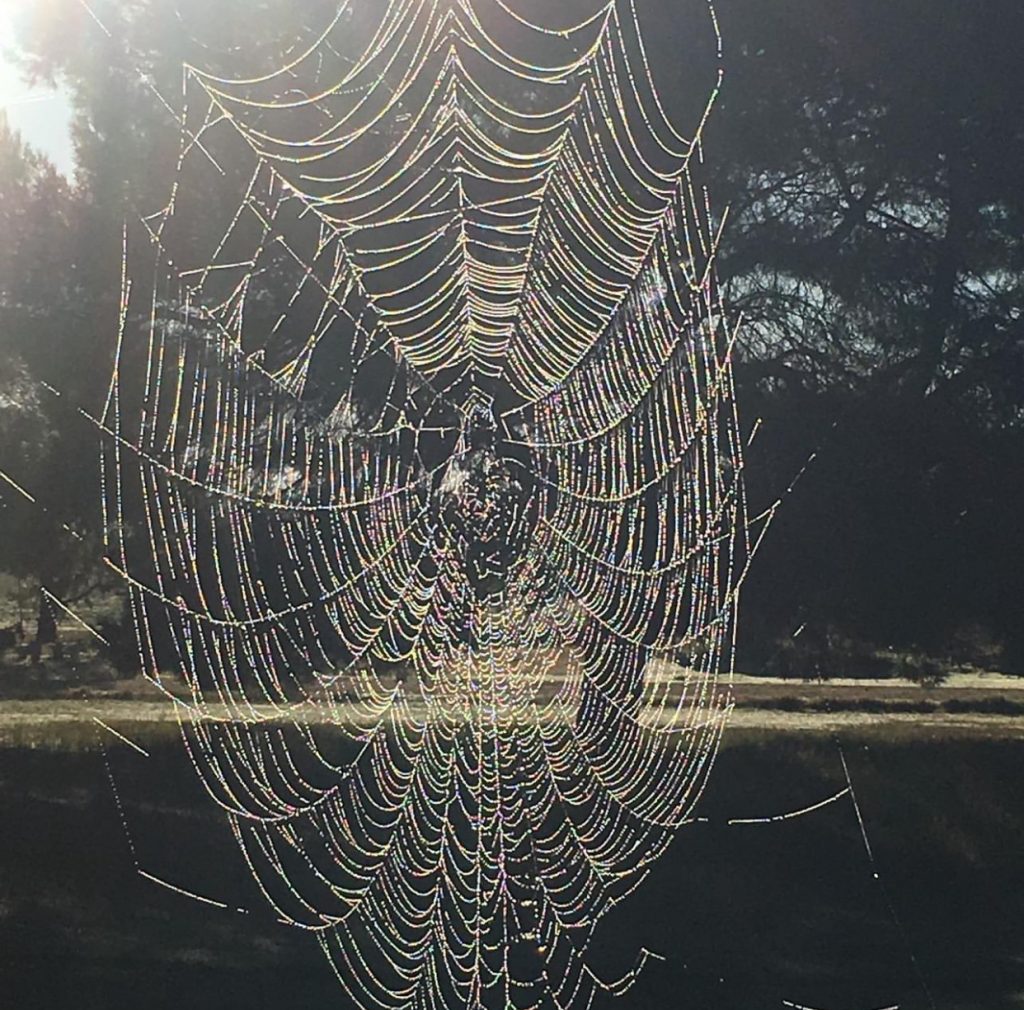
… the web itself is a miricle.
E. B. White | Charlotte’s Web
Spiders are undoubtedly designed architects who engineer beautiful, dazzling, and intricate webs. Spiders use distinct patterns to design their webs according to their species. So, spider webs can be identified and matched to their maker.
Earlier, we learned how spiders create webs. Now, we’ll find out how to identify a spider web. What do you remember about the silk spinning factory? Spiders have spinnerets on the underside of their abdomen, and each spinneret has a cluster of spigots. Each spigot is attached to its silk gland. There may be hundreds of silk glands in one spider!
Silk glands can be arranged into groups as each kind of silk gland will make a different type of silk for a different purpose. Spiders do not have all these silk glands making spider webs unique. Once we know what to look for, we’ll identify a web to its spider. Cool, hey?
- The major and minor ampullate glands are used to make the dragline that is attached to an object.
- The flagelliform and aggregate glands mix a sticky web line to create the inner spiral to catch insects.
- The achniform gland is used to wrap the insect in swathing silk.
- Silk from the tubuliform gland creates the egg sac.
- The Pyriform gland creates sticky silk to glue the web to an object.
These silk types have many uses like making trap doors for burrows, creating nests, parachuting, and ballooning.
Spiders can use the glands to add colour or scent to the silk.
Fun Fact
Spiders are decorators! Some use colour to attract insects. Golden Orb spiders love the colour gold, and so do insects. Spiders use strange patterns to decorate their webs too. The St Andrews Cross spider designs a zigzag cross in the middle of its web. When feeling threatened, it will slip through the web to hide behind the cross. An ingenious disguise! Other spiders infuse scent pheromones to attract mates or to lure a specific insect.
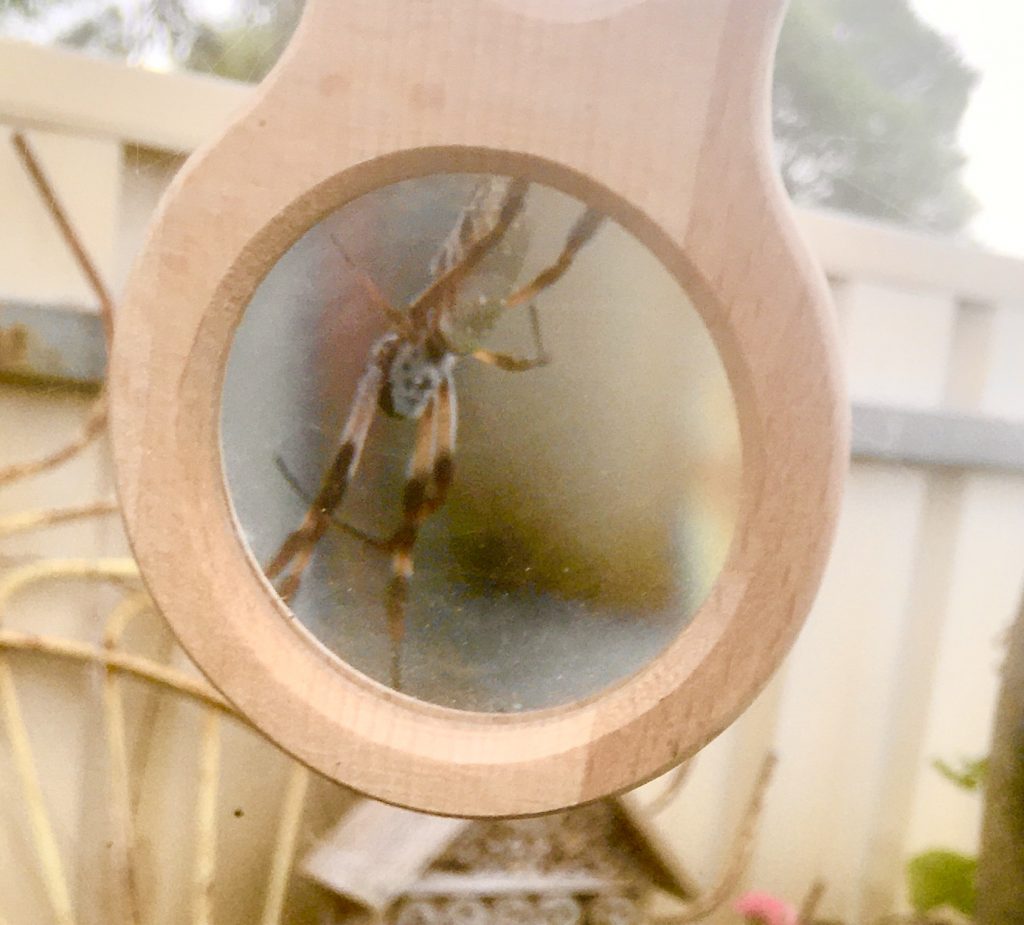
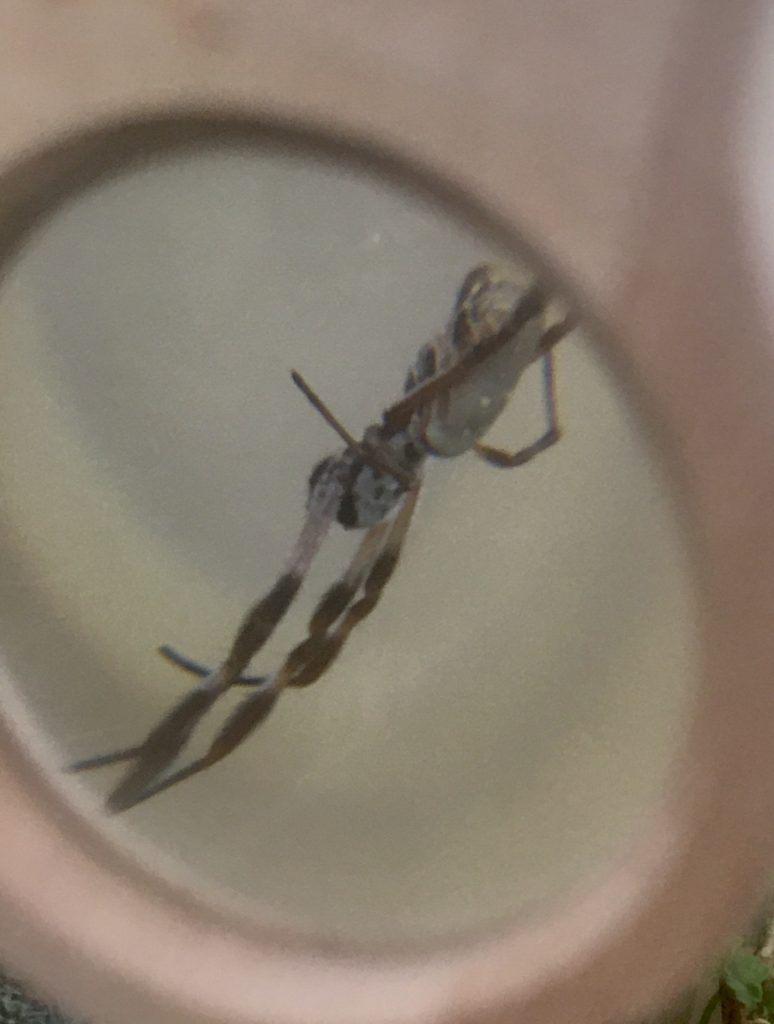
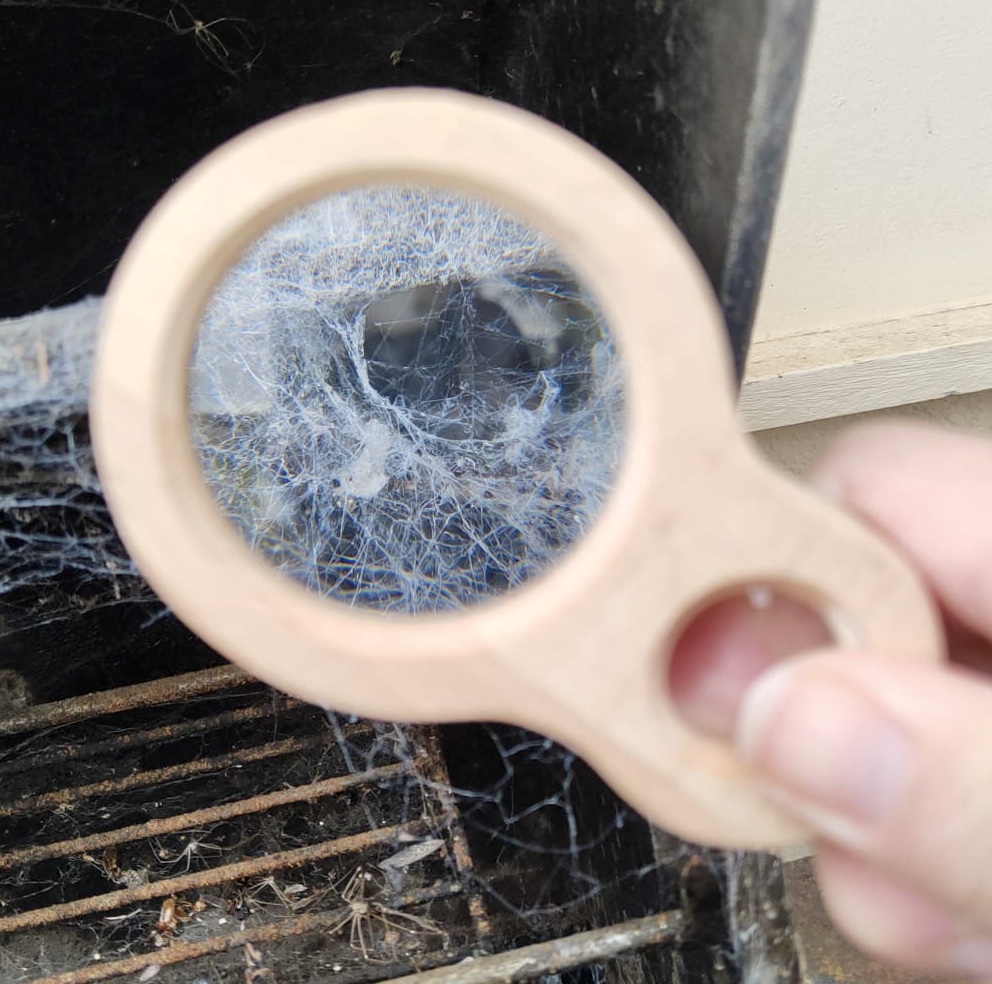
Here are a few common types of spider webs:
- Spiraled Orb Webs are wheel-shaped with dozens of small spokes leading to a spiral in the middle. It is designed to capture flying insects. The frame is made of strong, plain silk while the spokes are elastic and sticky. This type of web is made by the Aranedae family that includes garden spiders and Orb Weavers.
- Cob or Tangle Webs are a sticky mess. Or so it seems. The messy web is attached to an upper trellis with high-tension threads lined with glue. As an insect crawls along the line, it snaps and swings the insect into the web. Tangled webs are made by the Theridiidae family which includes house spiders.
- Sheet Webs are made with thick layers of silk making them flat or dome-shaped. They are created over tall grass or bushy shrubs. The spider hangs upside down while waiting for prey to be knocked into the deadly hammock. Sheet webs are built by the Linyphiidae family. They are small spiders who use silk to fly in the wind.
- Funnel webs are extraordinary, replicating a funnel design with a door at one end. The spider patiently waits inside the funnel. A web sheet spans the outside of the funnel and is used to entangle prey. As the insect struggles, vibrations run along the lines letting the spider know it has a catch. Funnel Webs are made by the Agelenidae family. Funnel-web spiders are one of the world’s most dangerous spiders. Take care near funnel-webs.
- Woolly Webs use electrostatically- charged sticky silk nanofibres to capture prey. They are a fuzzy, sticky mess.
- Triangle Webs are flat with three points. It looks like a slice of pizza. It has a fuzzy, sticky texture. These webs are made by the Uloboridae family. They are the least harmful spiders.
Now that you know the types of spider webs. Go walkabout to see how many you can find and who they may belong to.
Table of Contents
Activities
Draw the spider webs you found during your walkabout in your nature journal.
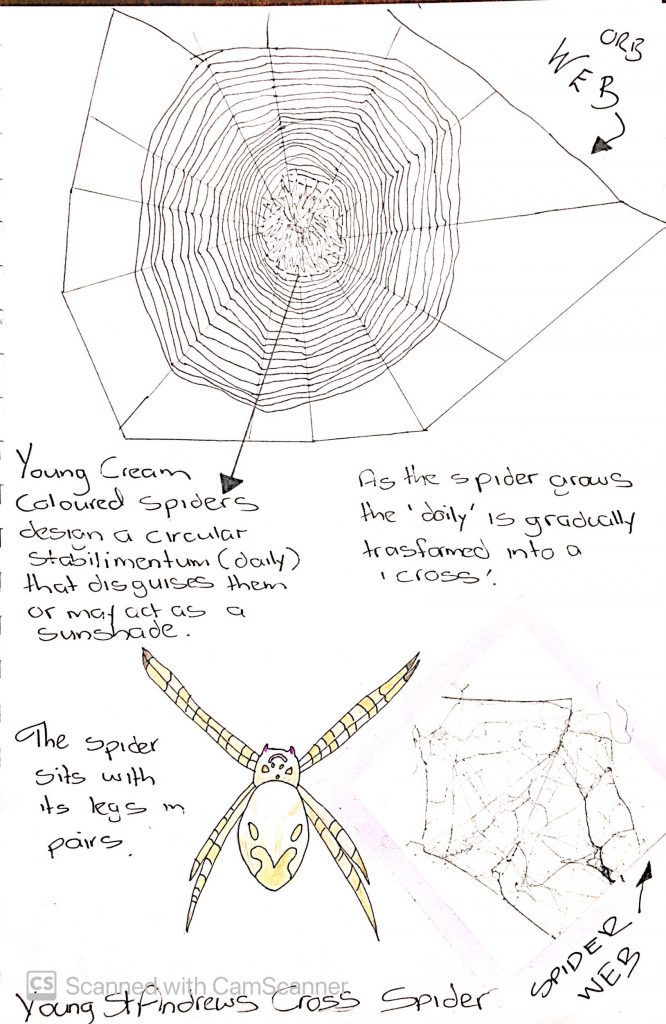
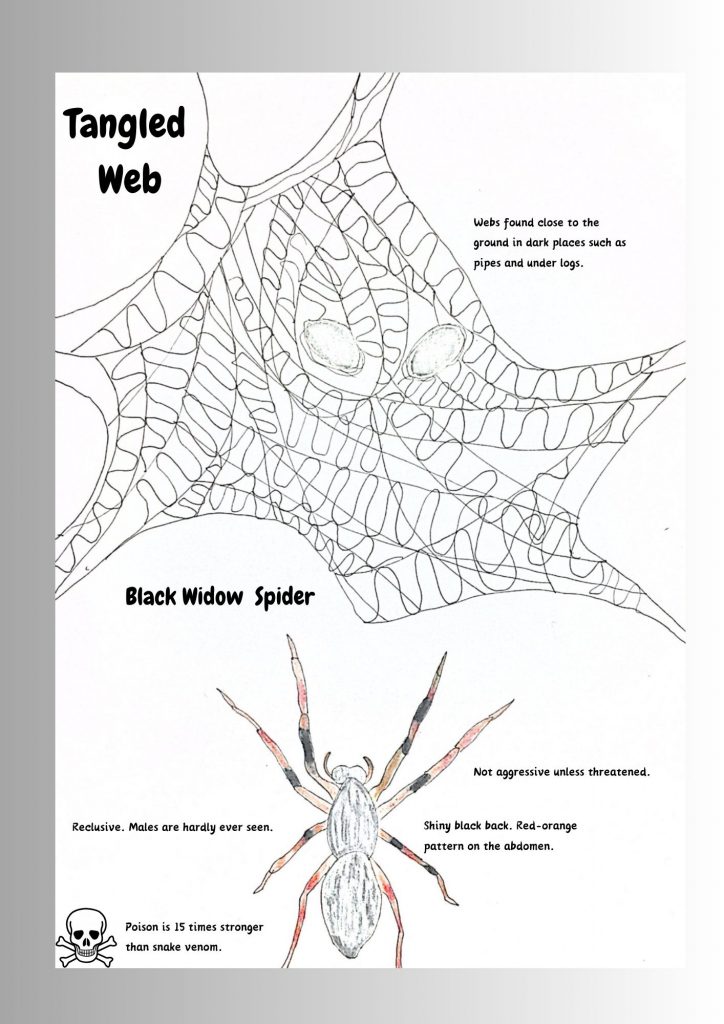
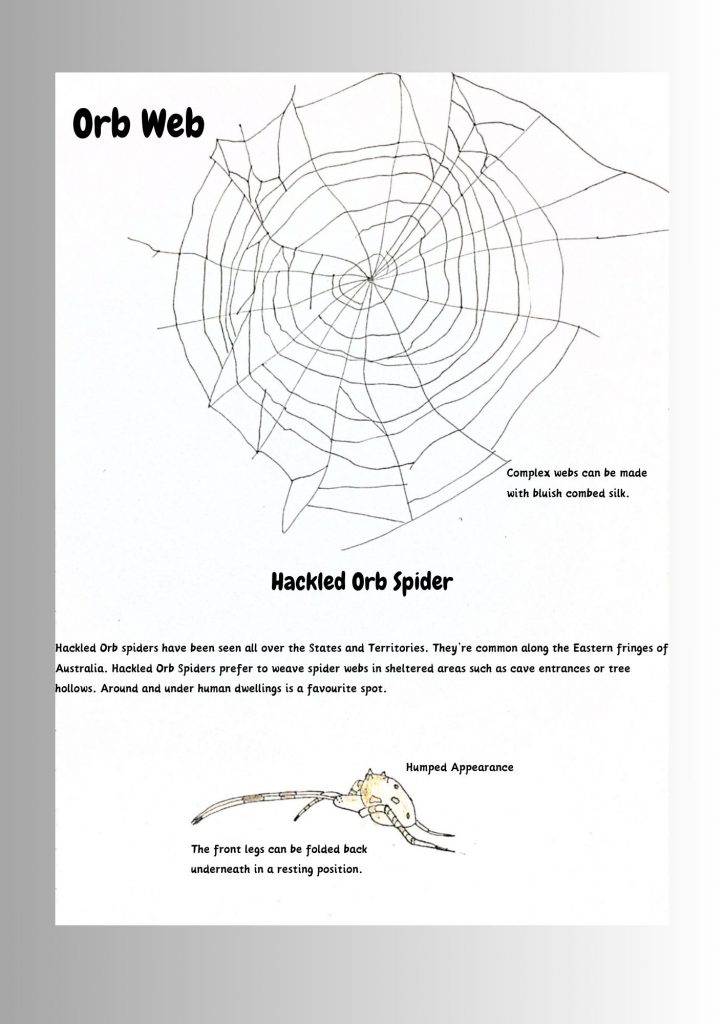
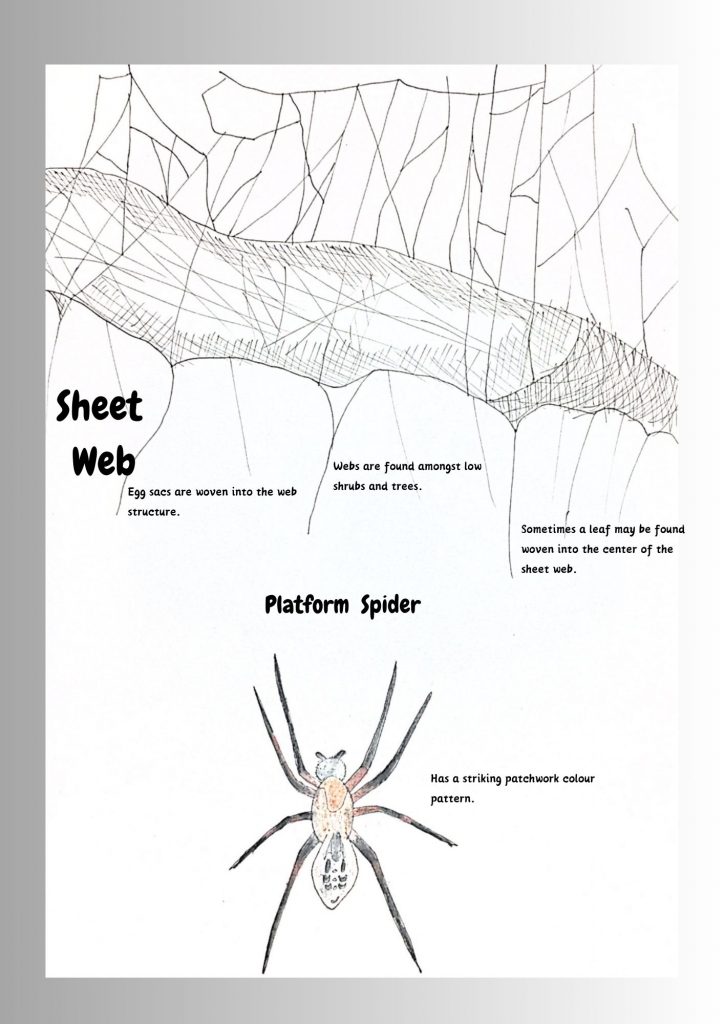
Download Know Your Spider Webs Guide for Spidering
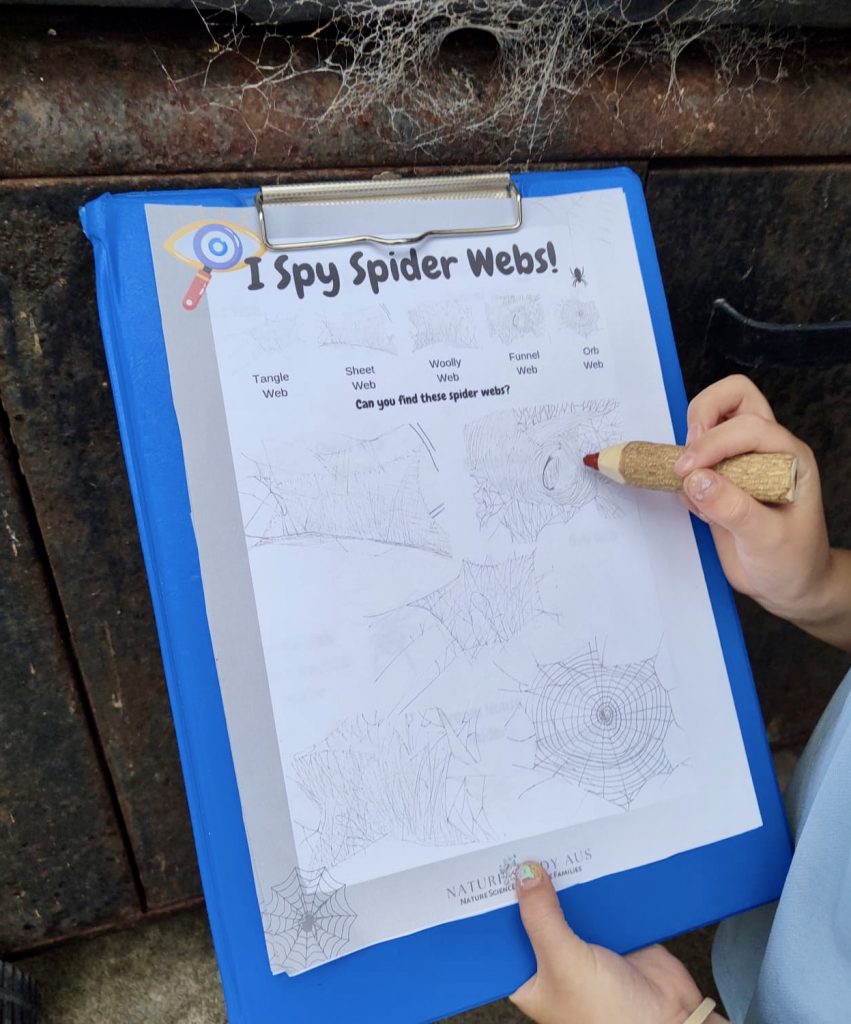
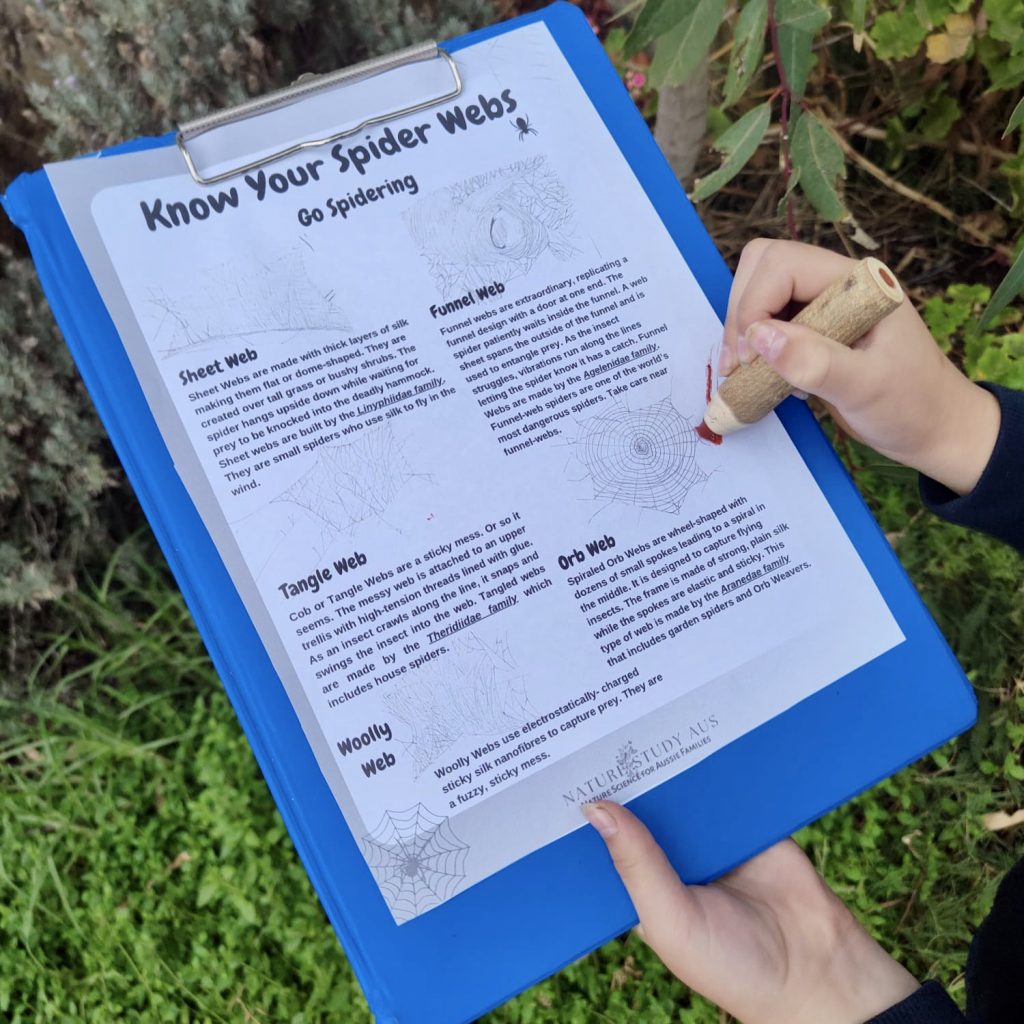
Websites to Visit
Spider Webs | Australian Museum
Videos to Visit
Watch Charlotte’s Web | The Movie
Books to Read or Listen to:
Charlotte’s Web by E. B. White
Be Inspired to Create a Masterpiece.
Wherever there is faith as slender as one strand of the spiders web, there the fulness of God’s redeeming grace is active.
John Murray